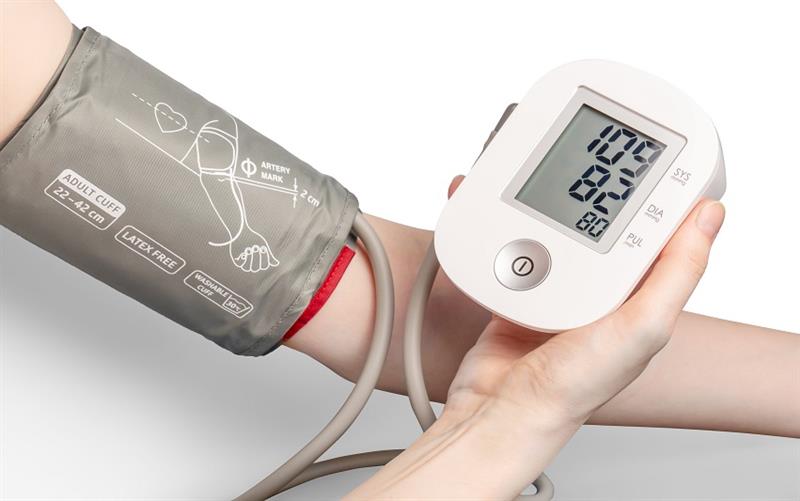
Why Should You Check Your Own Blood Pressure?
More and more individuals with high blood pressure are being advised by doctors to check their numbers at home.
Why? Your blood pressure reading at the doctor's workplace only displays your current numbers. You can examine it as frequently as you'd like using a home monitor. This can help your practitioner understand what your actual blood pressure is. Measure your blood pressure frequently each day for a few months to determine for sure if you have elevated blood pressure.
It's crucial to monitor your blood pressure, but it doesn't have to be challenging. Maintaining good health is simple with the proper at-home blood pressure monitor.You're more likely to receive the proper recommendations and medications if you document your blood pressure readings for your doctor between visits.
According to research, individuals with hypertension can keep their condition under control by using home blood pressure monitoring. Monitoring at home can be used to assess how well a treatment is working for people who are just beginning to take blood pressure medicines. As long as the readings are close to the normal 120/80 mmHg, minor fluctuations in daily blood pressure monitoring are acceptable. Therefore, keeping track of your blood pressure at home can serve as both a motivator and a source of real-time input.
You have a wide range of choices when it comes to home blood pressure monitors. Here are some suggestions to help you choose the best home blood pressure monitoring device if you're seeking to buy one.
1: Does the blood pressure machine have the proper measurement blood pressure cuff?
The most crucial aspect to consider when choosing a blood pressure monitor is the cuff size. Your upper arm's circumference is what determines the measurement. The measurements from a cuff that doesn't fit snugly on your arm could be off. The suggested measurements are as follows:
- Adult Small: 22 to 26 cm around the arm (about 8.5 to 10 inches).
- Average adult arm size is between 27 and 34 cm (about 10.5 to 13 inches).
- Arm length for an adult large: 35 to 44 centimetres (about 13.5 to 17 inches).
2: Is the BP machine precise and has it been clinically approved?
One of the most crucial features to look for in a blood pressure monitor is accuracy. To get accurate findings, make sure your blood pressure machine has been clinically tested for accuracy.
3: Is the UI for the blood pressure monitor straightforward and user-friendly?
It is simpler to use the blood pressure monitor and comprehend the findings thanks to an intuitive interface with big numbers and buttons.
4: Can the BP Analyzer Save Previous Readings?
These days, a lot of blood pressure monitors have the ability to store readings for numerous users. If you have at least one hypertensive person in your home, this feature is really useful.
5: Is the BP equipment portable?
A portable option might be advantageous for someone who is continually moving around and travelling.
6: Does it have any other extra monitoring capabilities?
Select the device that not only monitors your blood pressure but also looks for abnormal heartbeats. You can monitor potential issues and health risks in this manner.
7: Can the BP monitor be connected to iOS or Android?
Some blood pressure monitors can wirelessly connect via Bluetooth to your iOS or Android smartphone. This is a wonderful way to centrally store the monitored data electronically so you can access it whenever you need to.
Blood pressure monitors available in different varieties
Blood pressure monitors typically come in two varieties: Automatic and Human. Unlike the manual model, which calls for you to manually pump a bulb to inflate the cuff, automatic blood pressure monitors automatically inflate the cuff with the touch of a button. In general, the automatic BP monitor outperforms the manual one.
There are numerous choices for automatic blood pressure monitors, including:
1. Blood pressure cuff monitors for the upper limb
This is the most well-liked blood pressure device on the market. The cuff will automatically inflate and the measurement will be displayed if you are using a digital model. These days, the majority of digital monitors include "risk category signs," so you gain an advantage.Additionally, upper arm cuff blood pressure monitors—digital or manual—have a tendency to be more precise.
2. Blood pressure monitors for the wrist
These monitors are completely automatic and simple to use, but unless your arm and wrist are precisely at heart level, they are less accurate than upper arm cuff BP monitors. There is a lot of room for error, so you must adhere to the instructions very carefully. Compared to upper arm monitors, wrist monitors are more portable and sometimes more pleasant.
3. Watch for Finger Blood Pressure
These and wrist monitors are very comparable. They are more comfy than an upper arm monitor and are compact and portable.Once again, its lack of accuracy is its primary drawback.
4. An internal blood pressure monitor for a smartwatch or fitness device
You can use a blood pressure monitor watch to gauge your blood pressure levels today in the era of wearable technology by reading your systolic and diastolic pressure levels. You have the freedom to take readings as frequently as you'd like, even while on the go, thanks to blood pressure monitor watches and fitness trackers. Some of these gadgets also track sleep habits and step counts.